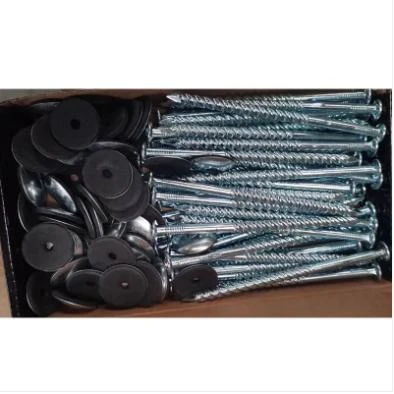Jan . 22, 2025 00:45 Back to list
types of roofing nails
Roofing nails are an essential component of any roofing project, playing a crucial role in the stability and durability of the structure. Their significance cannot be overstated as improper selection can lead to a myriad of issues, including leaks and structural damage. An expert’s understanding of the variety of roofing nails available is indispensable for homeowners, constructors, and roofing specialists alike. Leveraging extensive experience and authoritative insights, this document delves into the various types of roofing nails, elucidating their distinct features and ideal use cases.
Roofing nail length is another critical factor, generally dictated by the thickness of the roofing material and the underlayment. The length must be sufficient to penetrate, at minimum, three-quarters of an inch into the underlying materials for a secure hold. Inadequate length can lead to nails backing out over time, jeopardizing the integrity of the roof. In terms of design, screw shank nails are notable for their exceptional holding power. As the name suggests, these nails have a twisted shank similar to a screw, allowing them to create a more secure fit into the material, which is particularly useful in areas prone to high winds or seismic activity. Ring shank nails, meanwhile, feature concentric ridges along the shank, offering superior resistance against nail pull-out. This feature is especially beneficial for securing softer materials like wood. Beyond selection criteria, the actual installation process plays a pivotal role in determining the performance and longevity of the roofing nails. Nails should be driven perpendicular to the surface to ensure proper seating and to minimize water penetration. Furthermore, overdriving or underdriving nails must be avoided, as both can lead to compromised shingle integrity and potential leaks. The correct choice of roofing nails is intertwined with understanding regional climate conditions, roofing material characteristics, and specific building requirements. Each type of nail has its strengths and weaknesses, making it essential to align the choice with the intended application to achieve optimal results. As a trusted resource, this guide offers comprehensive insights to empower stakeholders in making informed decisions that align with both immediate and long-term roofing objectives. Understanding the nuances of roofing nails not only enhances the effectiveness of installation projects but also contributes significantly to the safety and durability of the structure. By considering material, design, length, and installation techniques, roofing professionals can mitigate risks and ensure a safe, secure, and enduring roofing solution that withstands the test of time and nature.


Roofing nail length is another critical factor, generally dictated by the thickness of the roofing material and the underlayment. The length must be sufficient to penetrate, at minimum, three-quarters of an inch into the underlying materials for a secure hold. Inadequate length can lead to nails backing out over time, jeopardizing the integrity of the roof. In terms of design, screw shank nails are notable for their exceptional holding power. As the name suggests, these nails have a twisted shank similar to a screw, allowing them to create a more secure fit into the material, which is particularly useful in areas prone to high winds or seismic activity. Ring shank nails, meanwhile, feature concentric ridges along the shank, offering superior resistance against nail pull-out. This feature is especially beneficial for securing softer materials like wood. Beyond selection criteria, the actual installation process plays a pivotal role in determining the performance and longevity of the roofing nails. Nails should be driven perpendicular to the surface to ensure proper seating and to minimize water penetration. Furthermore, overdriving or underdriving nails must be avoided, as both can lead to compromised shingle integrity and potential leaks. The correct choice of roofing nails is intertwined with understanding regional climate conditions, roofing material characteristics, and specific building requirements. Each type of nail has its strengths and weaknesses, making it essential to align the choice with the intended application to achieve optimal results. As a trusted resource, this guide offers comprehensive insights to empower stakeholders in making informed decisions that align with both immediate and long-term roofing objectives. Understanding the nuances of roofing nails not only enhances the effectiveness of installation projects but also contributes significantly to the safety and durability of the structure. By considering material, design, length, and installation techniques, roofing professionals can mitigate risks and ensure a safe, secure, and enduring roofing solution that withstands the test of time and nature.
Next:
Latest news
-
The Role of Field Wire Fence in Grassland Conservation
NewsJul.15,2025
-
Stainless Steel Razor Wire Durability in Coastal Environments
NewsJul.15,2025
-
Enhancing Home Security with Mesh Fences
NewsJul.15,2025
-
Diamond Mesh Wire for Small Animal Enclosures
NewsJul.15,2025
-
Common Wire Nail Tensile Strength Testing for Woodworking
NewsJul.15,2025
-
Barbed Wire Corrosion Resistance Galvanization Techniques
NewsJul.15,2025









